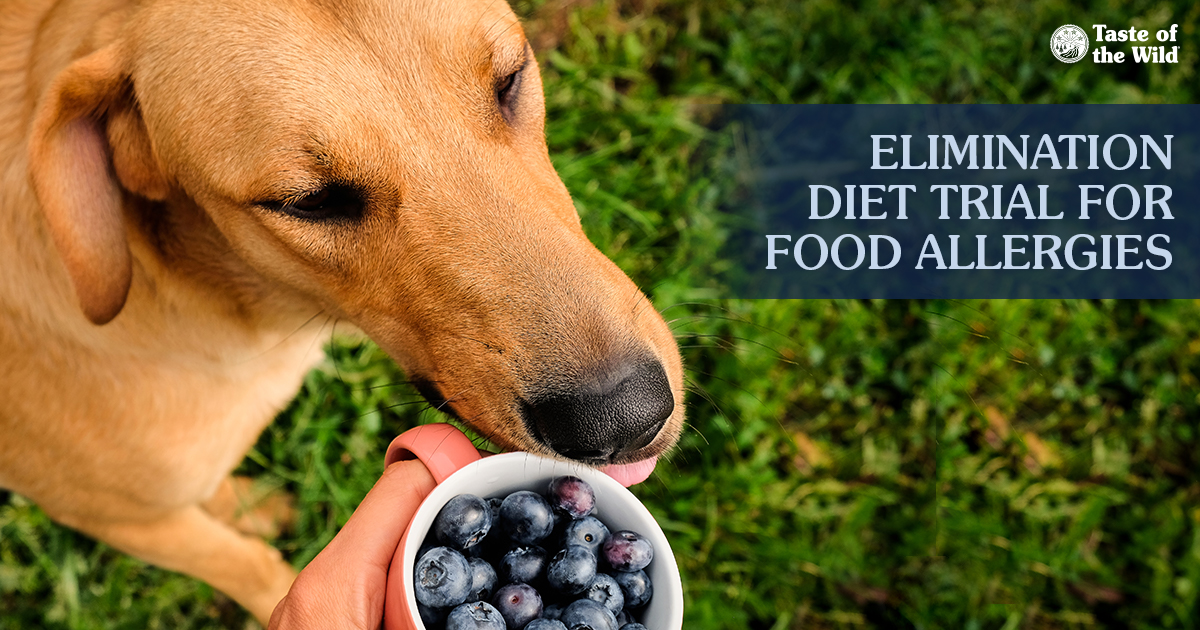Food reactions can cause year-round skin, ear and gastrointestinal problems in dogs and cats. The reaction may involve the immune system, as in a food allergy, where the body reacts to a protein in the diet. Or it can be a food intolerance, which doesn’t involve the immune system, and is generally a reaction to other dietary components such as carbohydrates, preservatives, dyes or flavorings.
Although pets are more likely to be allergic to environmental elements such as pollen or mold spores, those types of allergies are often more seasonal in nature. (To complicate matters, some pets can have food allergies and environmental allergies.) While there are ways to test for environmental allergies, there is not an accurate blood, saliva or skin test to determine if your pet has a food allergy.
If you think your pet has a food allergy, first work with your veterinarian to rule out other causes of their symptoms such as parasites, infections, metabolic diseases, and other potential health concerns. An elimination-challenge diet trial may be recommended. This can take 12 weeks or more, so it requires a lot of dedication and patience. If the signs disappear during the diet trial, then return when the pet is fed the original food, a diagnosis of food allergy is likely.
Signs of a food allergy
Dogs with a food allergy may scratch or chew at their face, ears, feet, groin and/or anal areas. They may develop red, irritated skin, secondary skin infections and ear infections. A smaller percentage of dogs may have gastrointestinal signs such as vomiting, diarrhea, gas, loud intestinal rumbling and frequent defecation.
Cats with food allergies often scratch at their face, neck and ears or they may overgroom, resulting in bald patches on their bodies. Some may have gastrointestinal signs, as well.
Because signs of food allergy can be similar to other causes of itching and digestive upset, it’s always a good idea to check in with your veterinarian before starting a food trial.
The elimination diet
The idea behind an elimination diet is to eliminate the ingredient in your pet’s food that’s causing a problem and see if the signs resolve. The diet is strict, in that your pet can only eat this diet and drink water for eight to 12 weeks, and possibly longer. That means no human food for kitty or doggy either!
Of course, it’s not as simple as just changing brands of food; a special diet is required.
One option is to feed a novel protein diet, which contains a protein the pet hasn’t been exposed to before. Novel protein diets often contain proteins such as rabbit, venison, duck or bison. There are numerous commercial novel protein diets available.
A veterinary nutritionist can also help you create a home-cooked novel protein option that might contain tilapia, salmon, rabbit, duck, pork or pinto beans. The protein is often mixed with a single carbohydrate, such as quinoa, sweet potato, oats or barley. A veterinary nutritionist can help make sure the diet is nutritionally complete and balanced for your pet.
The other option is to feed your pet a hydrolyzed protein diet, in which the protein is broken down into pieces too small for the immune system to recognize.
Your veterinarian can help you choose the best diet option if a food trial is indicated for your dog.
Remember, whenever you change your pet’s diet, do it gradually over the course of at least five to seven days to help prevent gastrointestinal upset. Each day, mix in a little less of the current diet with more of the new diet until the pet is only eating the new food.
The no-no list
During the diet trial, it’s important not to feed your pet anything other than the special diet. Treats or medications may contain allergy-inducing ingredients, so the diet trial may fail if these are not avoided.
That means no rawhides, bones, pig ears or chew toys made with animal products. No cheese, peanut butter, lunch meat or treats for hiding medications. No toothpaste or supplements. No fruits or vegetables unless your veterinarian says they’re OK. And dogs should not be allowed to snack in the litter box or pick up goodies at the dog park.
If your pet must take medications, ask your veterinarian if there is a hypoallergenic form, or if parasite prevention can be transitioned from oral to topical.
Watch for signs to improve
Your pet should be on the elimination diet for at least eight to 12 weeks. Once on the diet, gastrointestinal signs usually resolve in two to three weeks. Pets often show a reduction in scratching, licking, and chewing in four weeks, but it may take 12 weeks or more.
If signs improve, your veterinarian will let you know when to begin the “challenge” portion of the diet trial. In this phase, you will gradually transition your pet to the original diet over the course of five to seven days. If signs return, typically within days or up to two weeks, a diagnosis of food allergy is likely.
Prognosis
If the signs only partially improve, or there’s no improvement, there may be other allergies at play and further diagnostics may be needed. If your pet’s signs completely resolve on the elimination diet, then you have your answer. While there’s no cure for food allergies, feeding your pet an appropriate diet will help keep them more comfortable. Unfortunately, some pets may eventually develop additional food allergies, so future diet trials may be necessary.
RELATED POST: A Limited Ingredient Diet May Help Bring Allergy Relief
The information in this blog has been developed with our veterinarian and is designed to help educate pet parents. If you have questions or concerns about your pet's health or nutrition, please talk with your veterinarian.

